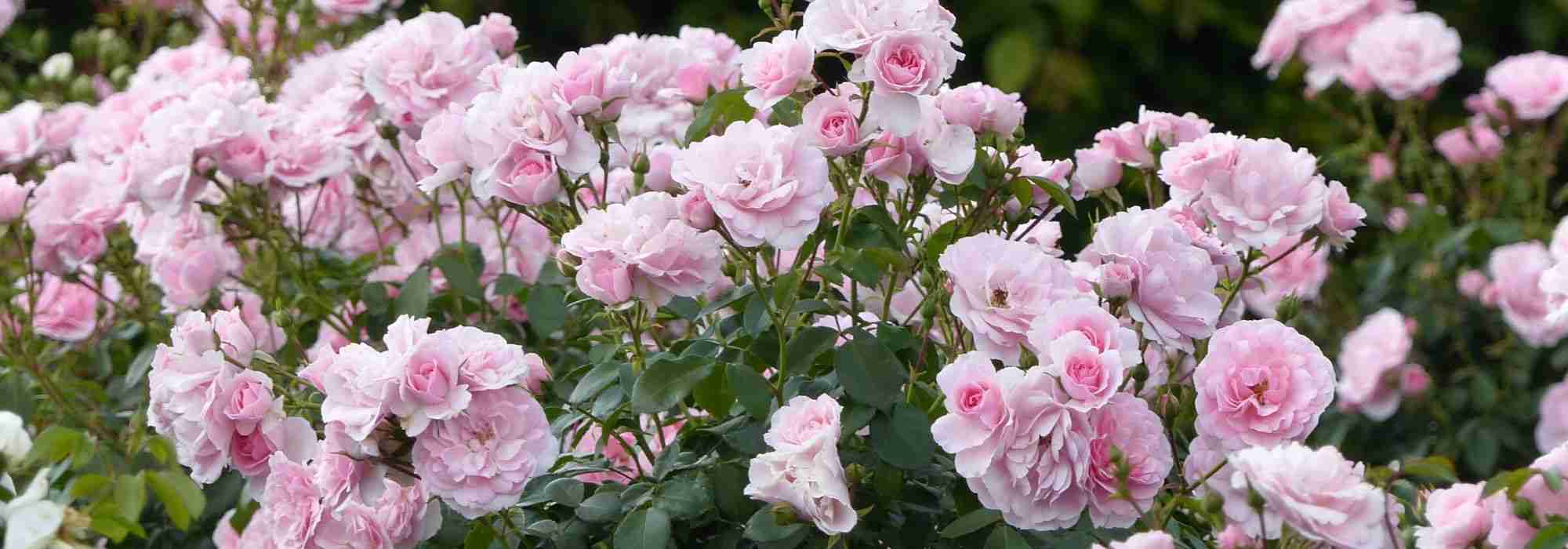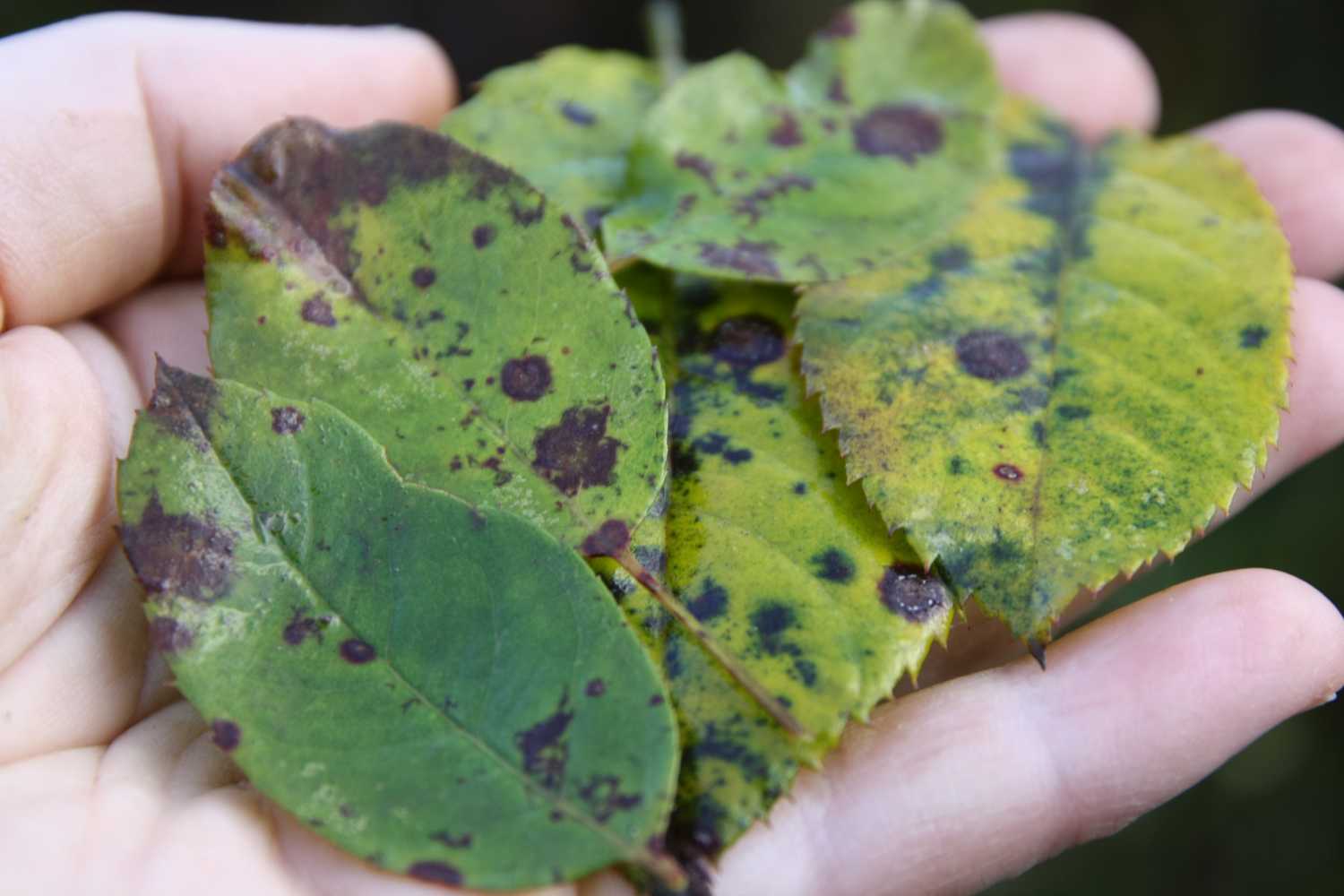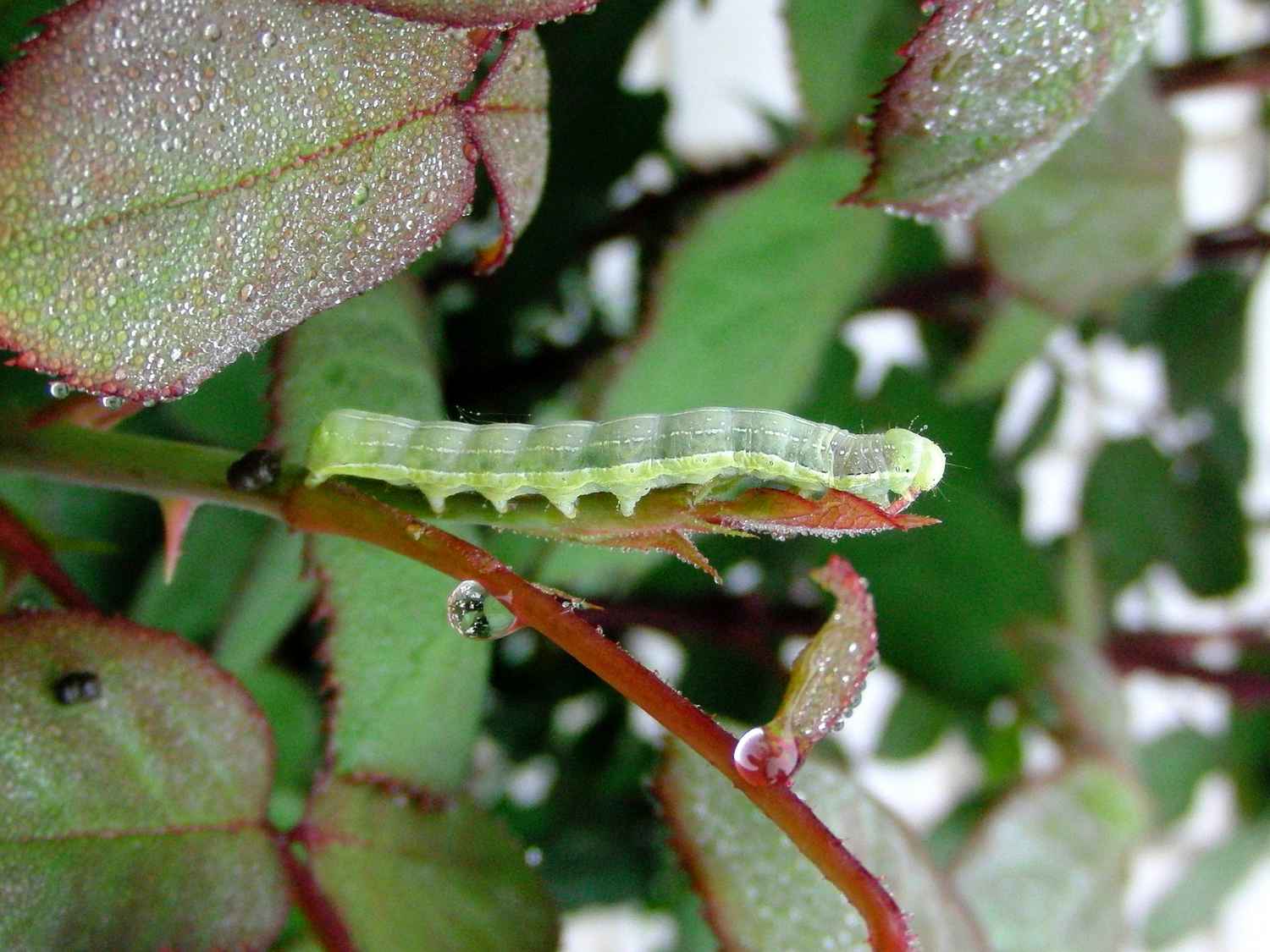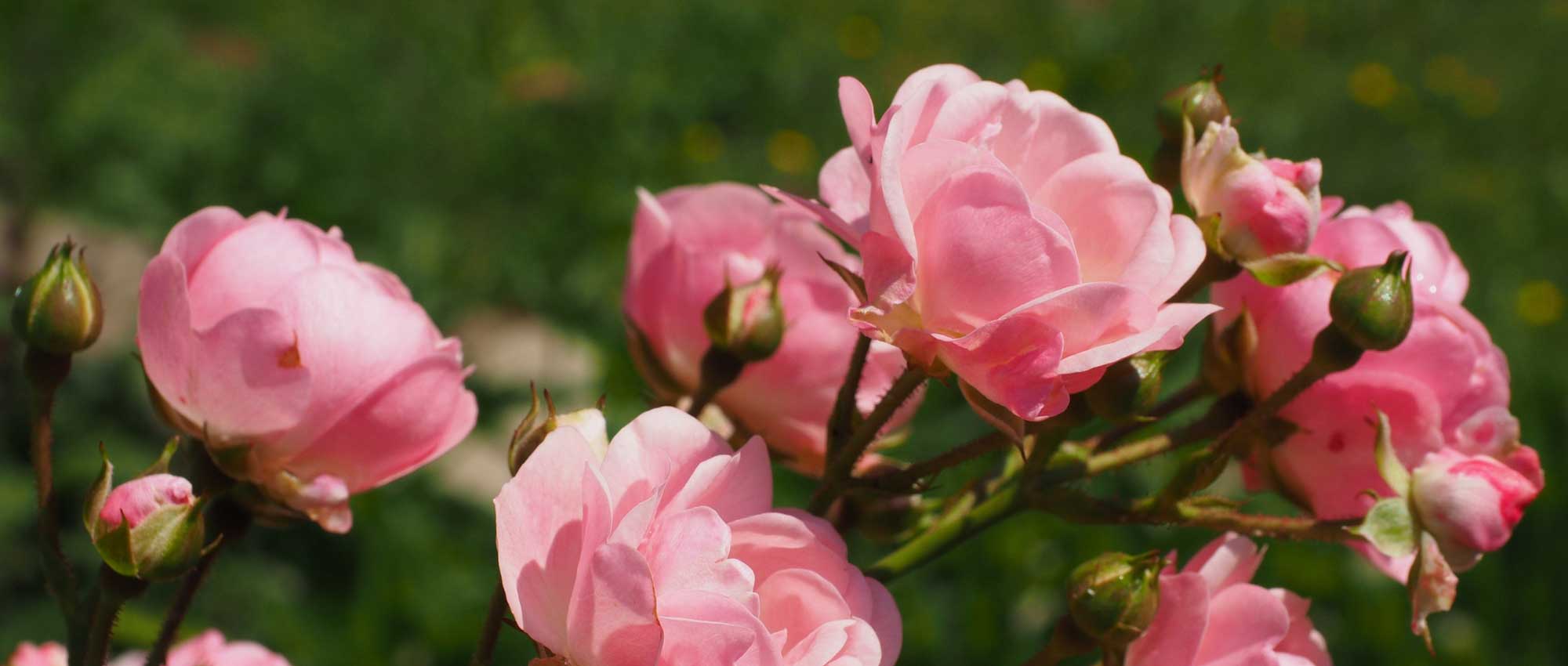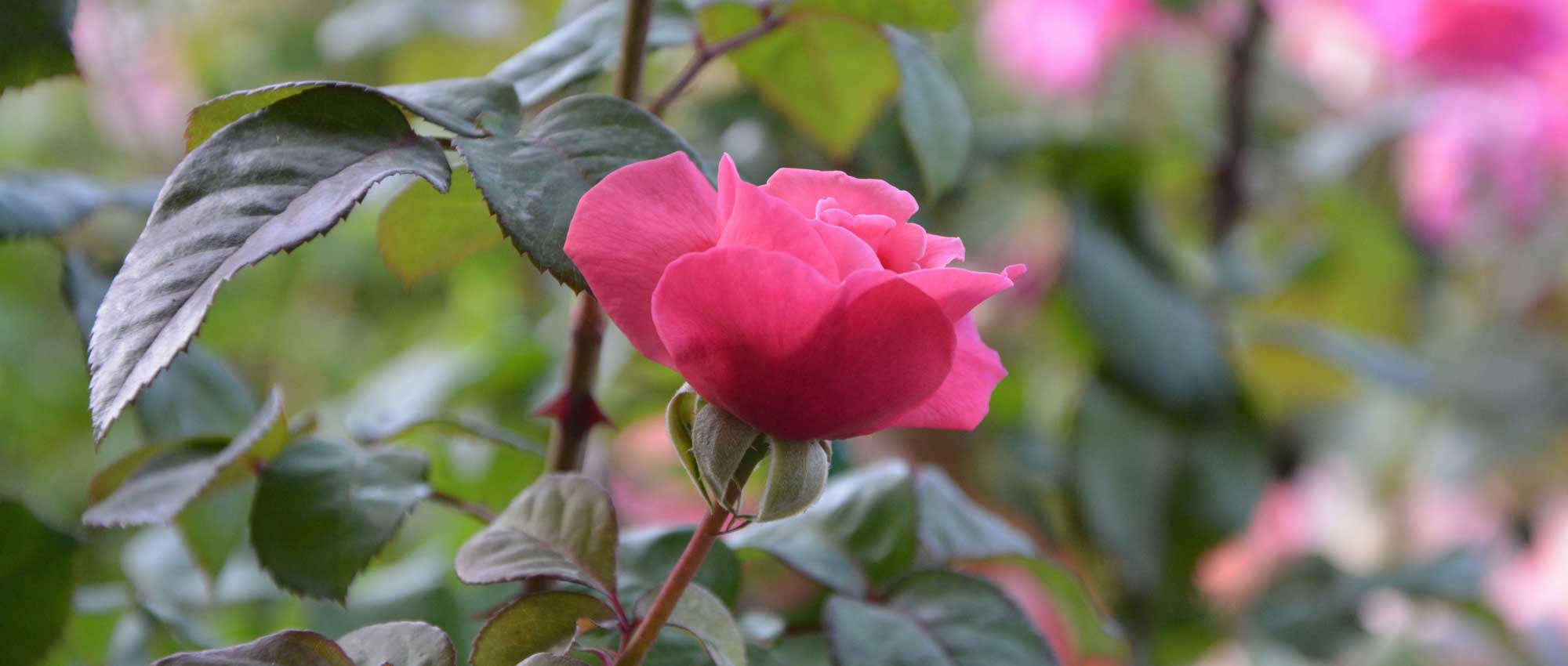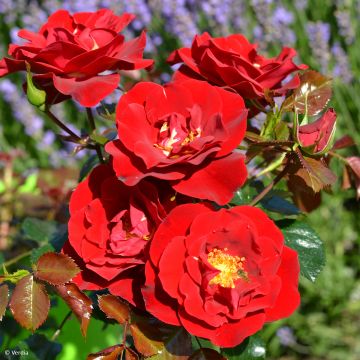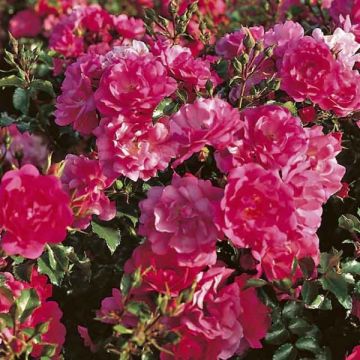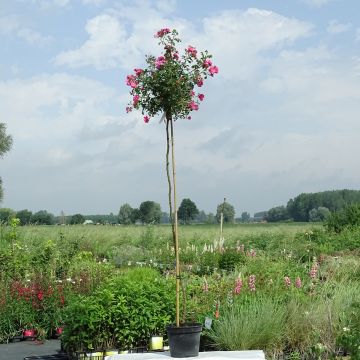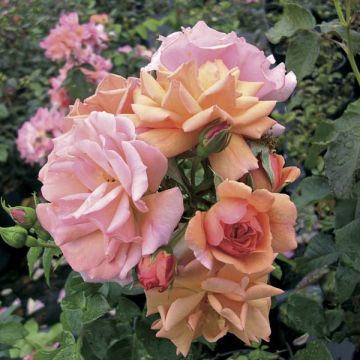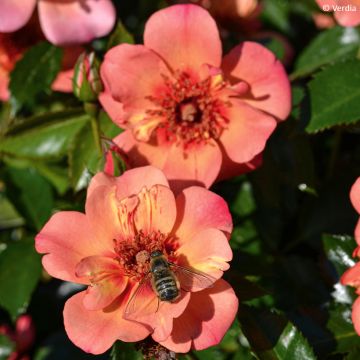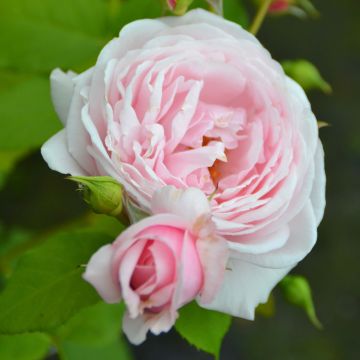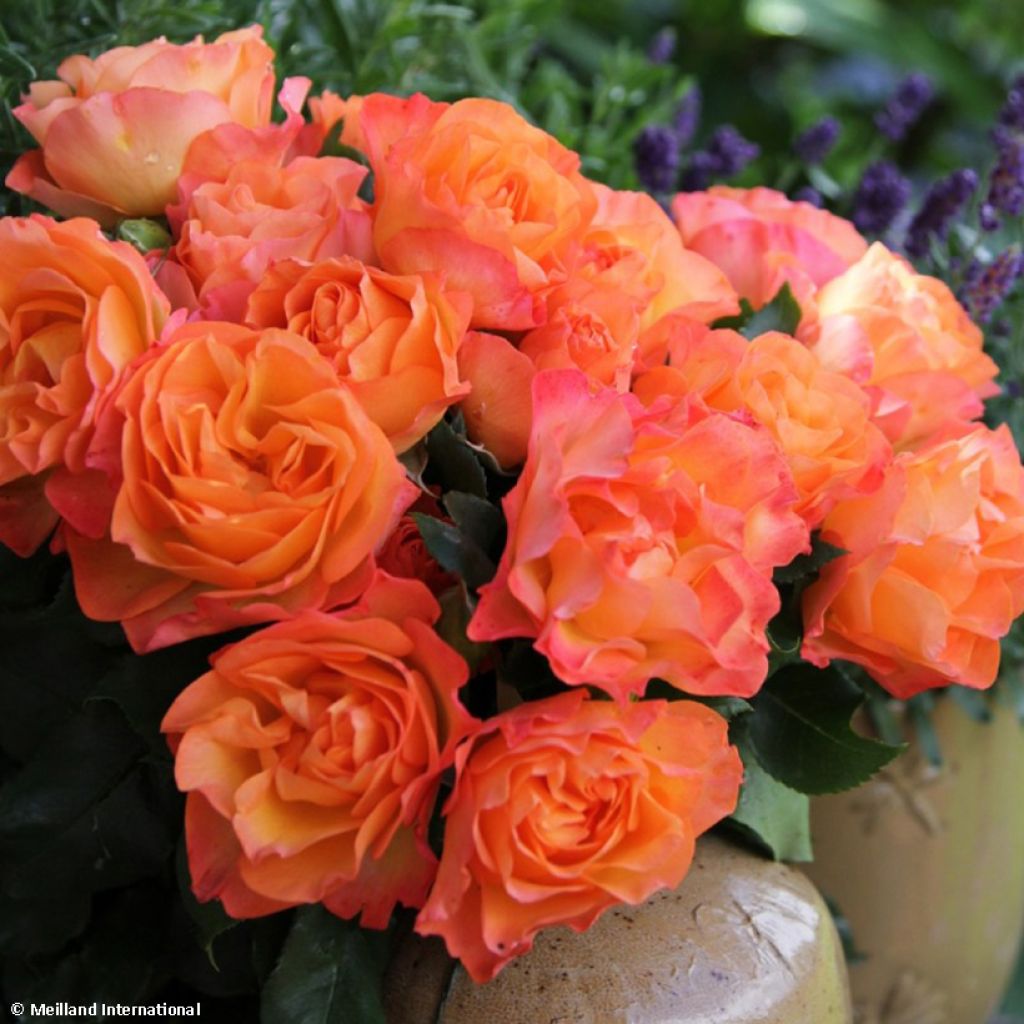

Rosa x polyantha Message d'Espoir - Polyantha Rose
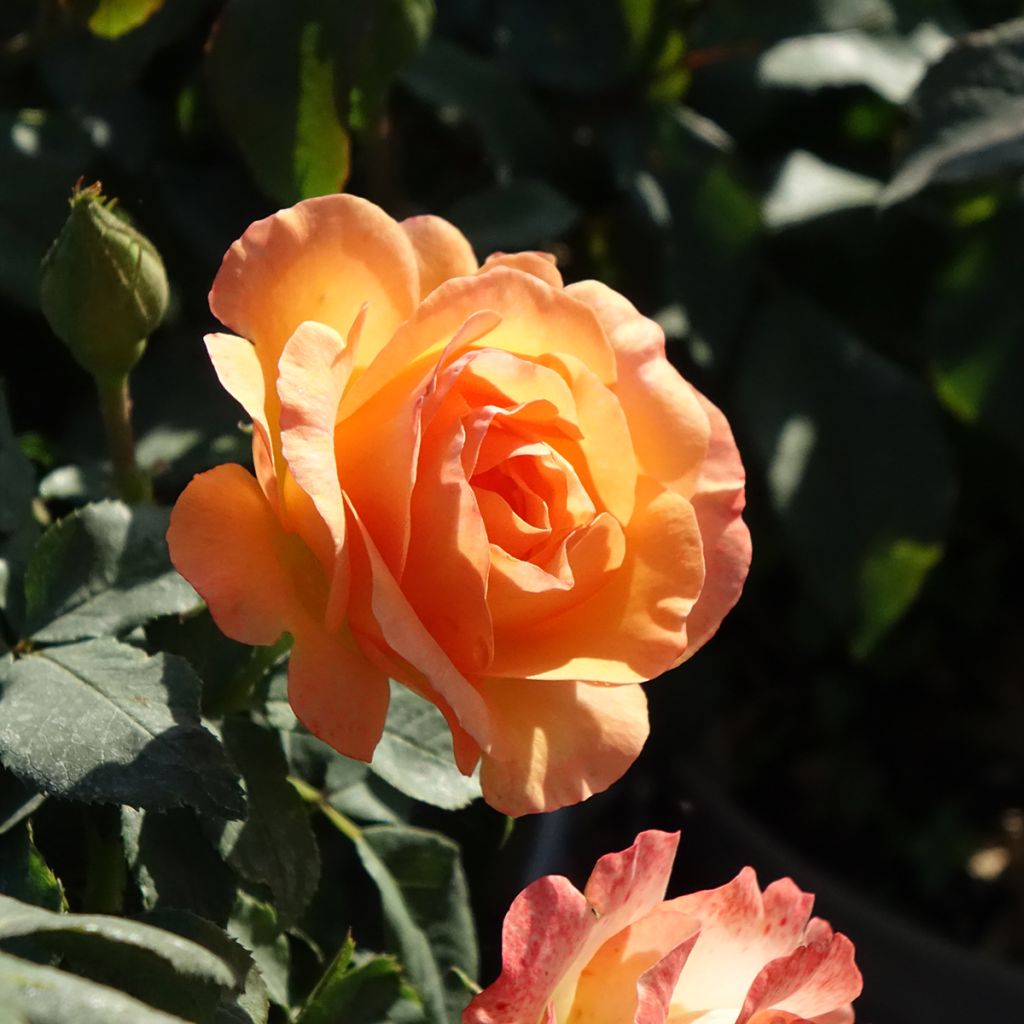

Rosa x polyantha Message d'Espoir - Polyantha Rose
Rosa x polyantha Message d'Espoir - Polyantha Rose
Rosa x polyantha Message d'Espoir 'Meishamalo'
Polyantha Rose
This rose bush is struggling and not growing. It's frustrating because it's surrounded by other magnificent rose bushes.
Solange, 13/05/2025
Special offer!
Receive a €20 voucher for any order over €90 (excluding delivery costs, credit notes, and plastic-free options)!
1- Add your favorite plants to your cart.
2- Once you have reached €90, confirm your order (you can even choose the delivery date!).
3- As soon as your order is shipped, you will receive an email containing your voucher code, valid for 3 months (90 days).
Your voucher is unique and can only be used once, for any order with a minimum value of €20, excluding delivery costs.
Can be combined with other current offers, non-divisible and non-refundable.
We guarantee the quality of our plants for a full growing cycle, and will replace at our expense any plant that fails to recover under normal climatic and planting conditions.

Description
The 'Message d'Espoir' Rose Bush is a bush that stands out for its uninterrupted flowering from June to October, as well as its bright and warm colours, blending yellow, pink, and orange with brilliance. Underneath its bouquets of flowers, it displays beautiful foliage of dark green, glossy, and disease-free. All these qualities have earned it several awards in new rose competitions. Plant it in your flower beds, in a small hedge, or in a pot on the terrace. A bunch of its flowers in a vase is a lovely adornment for the home. Pair them with white, blue, or even purple roses!
'Message d'Espoir' is a modern bush rose with clustered flowers introduced to the market by Meilland in 2018, dedicated to a child protection and assistance organisation. This excellent variety won the 'Rosa de la Gent Gran' Prize in Barcelona, Spain in 2015, the Le Roeulx Certificate in Belgium in 2015, the Orléans Public Prize in 2018, the Hradec Králové Certificate in the Czech Republic in 2018, and the Warsaw Merit Certificate in Poland in 2020. The plant, with rapid growth, forms a dense and upright bush, reaching approximately 90 cm (35in) to 1 m (3ft) in height and 50-60 cm (20-24in) in width. Its green branches are strong and thorny, bearing abundant, healthy foliage of shiny dark green. The young shoots are beautifully coloured in coppery bronze. This beautiful, deciduous foliage is absent in winter. Throughout the season, if one takes care to remove faded flowers, the plant produces bouquets of 3 to 15 flowers. Each flower has approximately 25 slightly undulated petals. At their opening, the flowers have a classic turbinate shape. They then open widely into frilly corollas with a diameter of 8 cm (3in). Their colour ranges from yellow at the base of the petal to a soft orange marginated with coppery pink on the edges. Through this play of changing shades, each flower is unique, and the whole is variegated.
This 'Message d'Espoir' rose is an easy plant to grow for everyone and everywhere. It fits well in a large pot on the terrace or balcony, among perennials or other bushes, along pathways, or in flower beds. The warm colour of its flowers enlivens any setting for months. To accompany it, consider catmints and small gauras which are equally generous. Some light-flowering perennials (autumn asters, foxgloves, penstemons), as well as grasses, lavenders, or even blue-flowering perennial geraniums, are ideal for enhancing its beauty. It will be superb when planted in groups of 3 surrounded by silver foliage (sea cineraria, dusty miller, 'Valerie Finnis' artemisia...)
Rosa x polyantha Message d'Espoir - Polyantha Rose in pictures
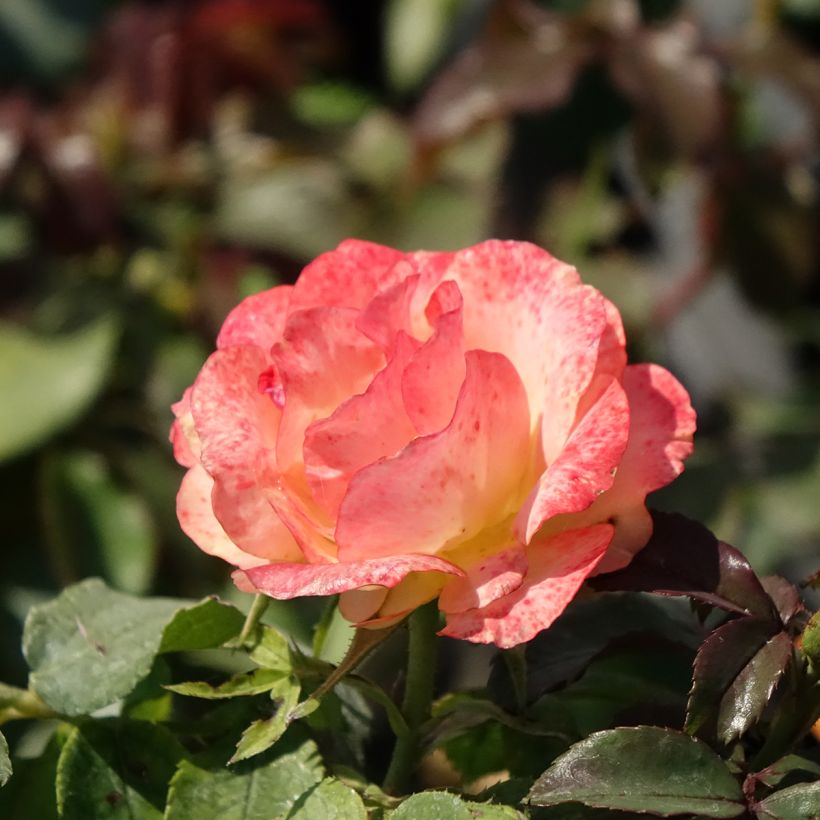

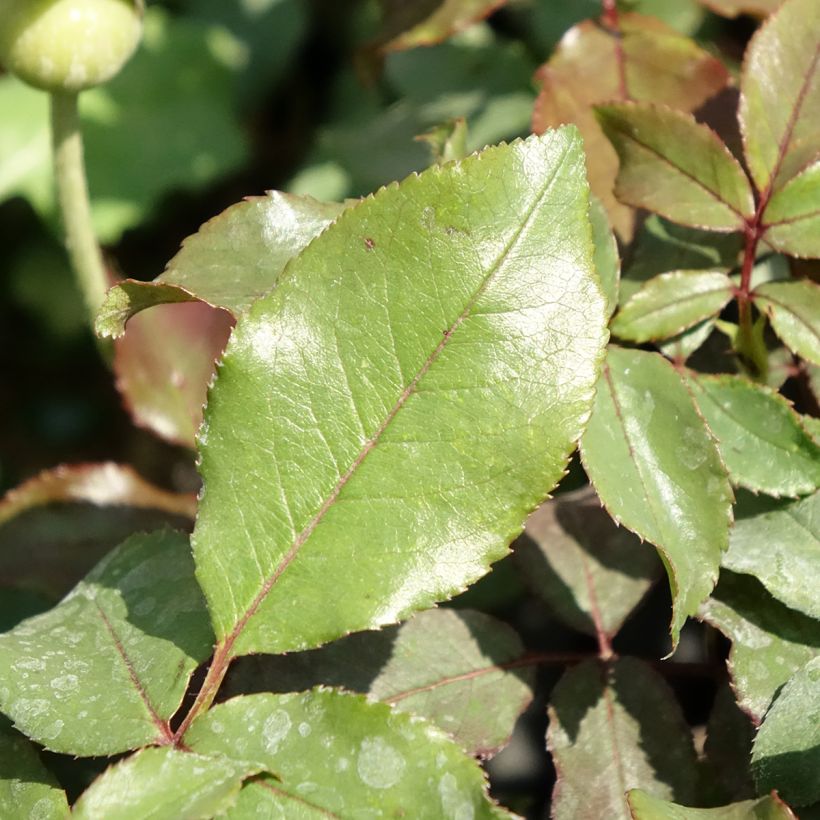

Plant habit
Flowering
Foliage
Botanical data
Rosa
x polyantha
Message d'Espoir 'Meishamalo'
Rosaceae
Polyantha Rose
Cultivar or hybrid
Planting and care
Plant your 'Message d'Espoir' rose bush in a sunny or lightly shaded location. Modern rose bushes are tolerant, but do not appreciate excessive limestone. They will adapt to any garden as long as the soil is well worked, not too heavy, and very rich.
To plant your rose, work the soil to a depth of 25 cm (10in), crumble the soil well and place a base amendment such as dried blood or dehydrated horn at the bottom of the planting hole. Position your plant, freed from its pot, covering the top of the root ball with 3 cm (1in) of soil. Fill in the hole and water thoroughly to eliminate air pockets. In dry weather, it is necessary to water regularly for a few weeks to facilitate root growth. Also, remember to provide your rose with special rose fertiliser that stimulates plant flowering.
Pruning modern perpetual roses is essential for flowering. It is done in three stages:
1. Maintenance pruning: regularly shorten the branches that have bloomed during the season. To encourage the re-blooming of perpetual roses, remove faded flowers along with their stems, leaving 2 or 3 leaves.
2. Preparatory autumn pruning: light pruning that anticipates the true spring pruning. In regions with cold winters, it is not recommended as it can weaken the bush.
3. Spring pruning: in February-March, when the buds have become shoots 2 to 3 cm (1in) long: prune the young strong branches to a quarter of their length.
Pruning always aims to open up the centre of the bush and remove dead wood, diseased branches, and weak shoots. Keep the most vigorous branches, usually 3 to 6 well-positioned branches, to maintain a beautiful habit. Always prune at an angle, ½ cm or 1 cm (<1in) above an outward-facing bud.
Planting period
Intended location
Care
Planting & care advice
-
, onOrder confirmed
Reply from on Promesse de fleurs
Similar products
Haven't found what you were looking for?
Hardiness is the lowest winter temperature a plant can endure without suffering serious damage or even dying. However, hardiness is affected by location (a sheltered area, such as a patio), protection (winter cover) and soil type (hardiness is improved by well-drained soil).

Photo Sharing Terms & Conditions
In order to encourage gardeners to interact and share their experiences, Promesse de fleurs offers various media enabling content to be uploaded onto its Site - in particular via the ‘Photo sharing’ module.
The User agrees to refrain from:
- Posting any content that is illegal, prejudicial, insulting, racist, inciteful to hatred, revisionist, contrary to public decency, that infringes on privacy or on the privacy rights of third parties, in particular the publicity rights of persons and goods, intellectual property rights, or the right to privacy.
- Submitting content on behalf of a third party;
- Impersonate the identity of a third party and/or publish any personal information about a third party;
In general, the User undertakes to refrain from any unethical behaviour.
All Content (in particular text, comments, files, images, photos, videos, creative works, etc.), which may be subject to property or intellectual property rights, image or other private rights, shall remain the property of the User, subject to the limited rights granted by the terms of the licence granted by Promesse de fleurs as stated below. Users are at liberty to publish or not to publish such Content on the Site, notably via the ‘Photo Sharing’ facility, and accept that this Content shall be made public and freely accessible, notably on the Internet.
Users further acknowledge, undertake to have ,and guarantee that they hold all necessary rights and permissions to publish such material on the Site, in particular with regard to the legislation in force pertaining to any privacy, property, intellectual property, image, or contractual rights, or rights of any other nature. By publishing such Content on the Site, Users acknowledge accepting full liability as publishers of the Content within the meaning of the law, and grant Promesse de fleurs, free of charge, an inclusive, worldwide licence for the said Content for the entire duration of its publication, including all reproduction, representation, up/downloading, displaying, performing, transmission, and storage rights.
Users also grant permission for their name to be linked to the Content and accept that this link may not always be made available.
By engaging in posting material, Users consent to their Content becoming automatically accessible on the Internet, in particular on other sites and/or blogs and/or web pages of the Promesse de fleurs site, including in particular social pages and the Promesse de fleurs catalogue.
Users may secure the removal of entrusted content free of charge by issuing a simple request via our contact form.
The flowering period indicated on our website applies to countries and regions located in USDA zone 8 (France, the United Kingdom, Ireland, the Netherlands, etc.)
It will vary according to where you live:
- In zones 9 to 10 (Italy, Spain, Greece, etc.), flowering will occur about 2 to 4 weeks earlier.
- In zones 6 to 7 (Germany, Poland, Slovenia, and lower mountainous regions), flowering will be delayed by 2 to 3 weeks.
- In zone 5 (Central Europe, Scandinavia), blooming will be delayed by 3 to 5 weeks.
In temperate climates, pruning of spring-flowering shrubs (forsythia, spireas, etc.) should be done just after flowering.
Pruning of summer-flowering shrubs (Indian Lilac, Perovskia, etc.) can be done in winter or spring.
In cold regions as well as with frost-sensitive plants, avoid pruning too early when severe frosts may still occur.
The planting period indicated on our website applies to countries and regions located in USDA zone 8 (France, United Kingdom, Ireland, Netherlands).
It will vary according to where you live:
- In Mediterranean zones (Marseille, Madrid, Milan, etc.), autumn and winter are the best planting periods.
- In continental zones (Strasbourg, Munich, Vienna, etc.), delay planting by 2 to 3 weeks in spring and bring it forward by 2 to 4 weeks in autumn.
- In mountainous regions (the Alps, Pyrenees, Carpathians, etc.), it is best to plant in late spring (May-June) or late summer (August-September).
The harvesting period indicated on our website applies to countries and regions in USDA zone 8 (France, England, Ireland, the Netherlands).
In colder areas (Scandinavia, Poland, Austria...) fruit and vegetable harvests are likely to be delayed by 3-4 weeks.
In warmer areas (Italy, Spain, Greece, etc.), harvesting will probably take place earlier, depending on weather conditions.
The sowing periods indicated on our website apply to countries and regions within USDA Zone 8 (France, UK, Ireland, Netherlands).
In colder areas (Scandinavia, Poland, Austria...), delay any outdoor sowing by 3-4 weeks, or sow under glass.
In warmer climes (Italy, Spain, Greece, etc.), bring outdoor sowing forward by a few weeks.


































